AIRCRAFT BURIAL PIT FOR DEPOT #2
NOW HEATLEY PARK, TOWNSVILLE, QLD
IN AUSTRALIA DURING WWII
![]()
In about June/July 2019, a Townsville City Council contractor, exposed some WWII aircraft parts whilst excavating in Heatley Park to build a concrete walkway and to lay some cables for some lighting towers and an underground reticulated irrigation system. Whilst the bobcat being used pulled up a lot of pieces from just below the surface, the trenching machine found a great deal more at depth. The location is near the Long Tan Swimming Pool in Fulham Road, Heatley. The items which were found very close to the surface, included some propellers parts, an aircraft turbocharger and a crushed aluminium sheet from an aircraft. See the photos below. In late July 2019 these parts were still sitting in the park behind a construction fence.
This excavation work was in the vicinity of the WWII aircraft burial pit used by the 12th Air Depot Group towards the end of the war to dispose of unwanted aircraft pieces and aircraft spares. The 12th Air Depot Group was based at the nearby Depot No. 2 at the base of Mount Louisa. The new walkway runs between the aircraft burial pit and the tennis courts and heads back towards the western US Naval magazine store.
There was no publicity about the finds in the newspapers at that time. I later contacted Tess Ikonomou, a reporter at the Townsville Bulletin, to see if she was interested in running a story on the recent finds. Tess agreed to run a story and that appeared in the Townsville Bulletin on Tuesday 13 August 2019. The article referred to an application being submitted to the Townsville City Council for an excavation at the park by local pilot Keith Hopper. It would be a 1 metre by 1 metre test pit similar to what you would have often seen on the popular TV show called "Time Team". The proposed Test Pit would not be within 4 metres of any known infrastructure and would be under the supervision of an Archeologist. It would be refilled by the end of the day to minimise any disruption to the community. A representative of the Air Force Heritage Centre would be present, and Keith is hoping to secure a representative from the Townsville Historical Society as an observer as well.
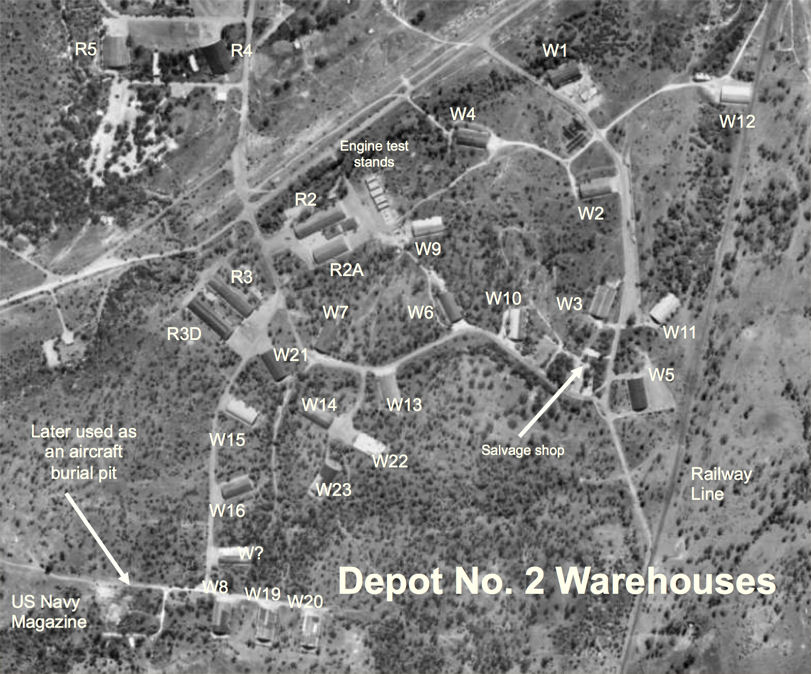
The WWII aircraft burial pit area
can be seen in the bottom left
corner of this aerial photo close to the Depot #2 Warehouses

The same area many years later.
Heatley Park can
be seen in the bottom left corner of this aerial photo
The following photos were taken of only some of the items that were recovered. There were many more. All of the items were all thrown into a skip for disposal.
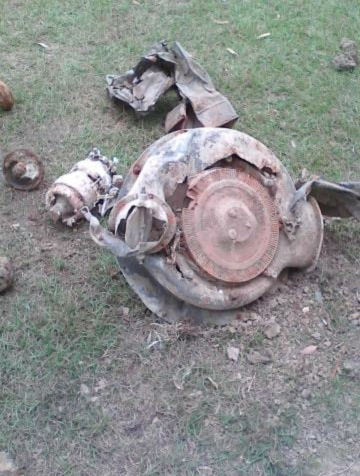
Photo:- Ray Boneham
Damaged aircraft supercharger

Photo:- Ray Boneham
Nameplate on the twisted metal of
an exhaust possibly from a bomber
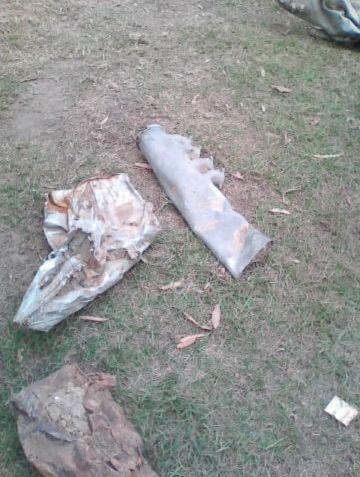
Photo:- Ray Boneham
Damaged aircraft parts including a
Lockheed P-38 Lightning exhaust
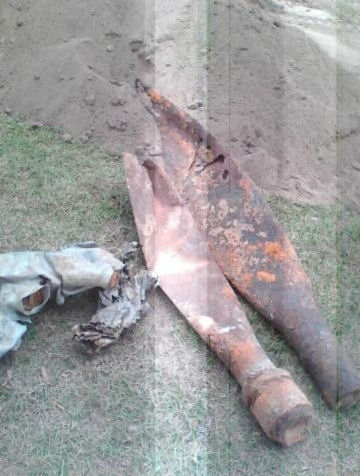
Photo:- Ray Boneham
Damaged propellers
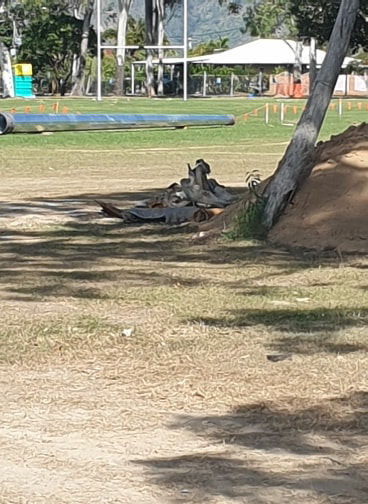
Photo:- Keith Hopper
Aircraft parts sitting in park inside construction fence
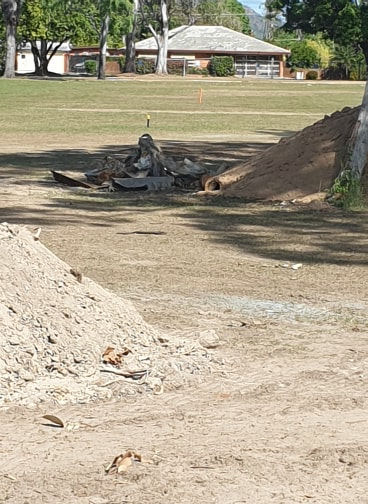
Photo:- Keith Hopper
Aircraft parts sitting in park inside construction fence
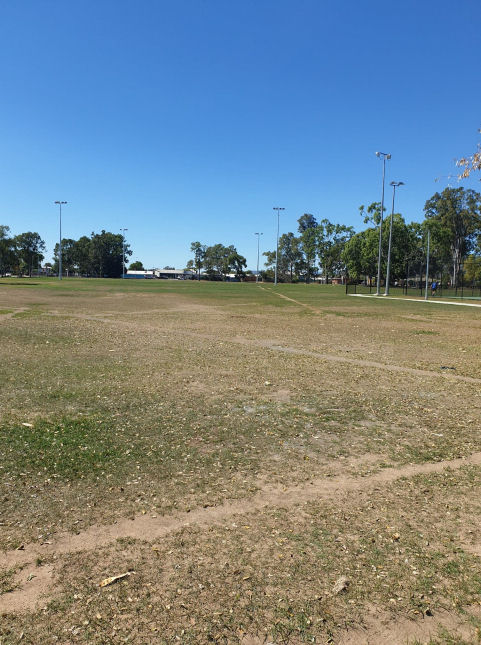
Photo:- Keith Hopper August 2019
View of Heatley Park looking east,
from the western
end of the park with the tennis courts on the right.
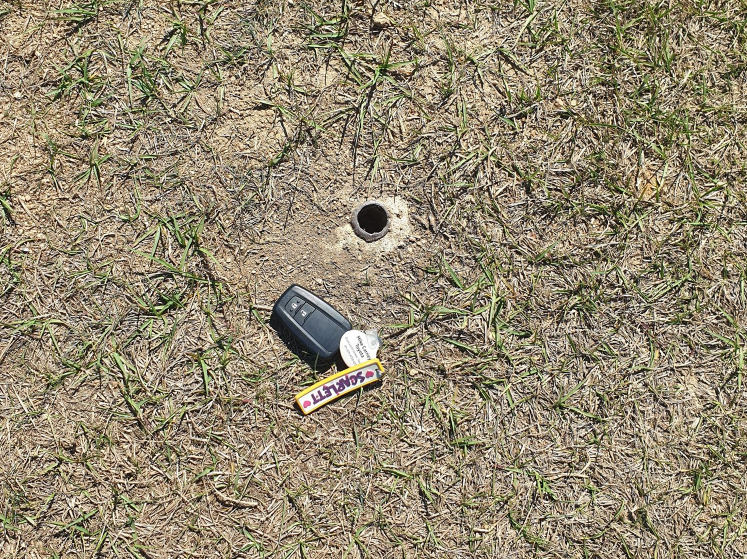
Photo:- Keith Hopper
An old piece of pipe concreted into the ground where the burial pit was located.
During WWII this location was initially used by the US Navy as a Naval Magazine. Its construction was approved on 10 May 1943. There were two large magazines constructed and a barracks, mess hall, ablutions, tool room and detonator house. It is assumed that personnel from Depot #2 (Townsville Air Depot) near the eastern end of Mount Louisa took advantage of the area after the US Navy vacated the location to bury unwanted aircraft parts towards the end of the war.
In October 1999, Lyle Henrich told me that as a junior he used to play soccer for Heatley Rangers. Where they trained at Heatley Park, near the Long Tan pool, they were always finding parts of aircraft that would work their way up through the soil. Mel Dundas-Taylor told me a similar story that a friend and ex-student who helped out at Syd Beck's collection was a keen soccer player. He helped to prepare the ground for the soccer field in Heatley Park and he said they dug out stacks of small aircraft parts, including instruments. Syd talked of a large scrapping area and burning pit north of Charles Street which is where Heatley Park is located.
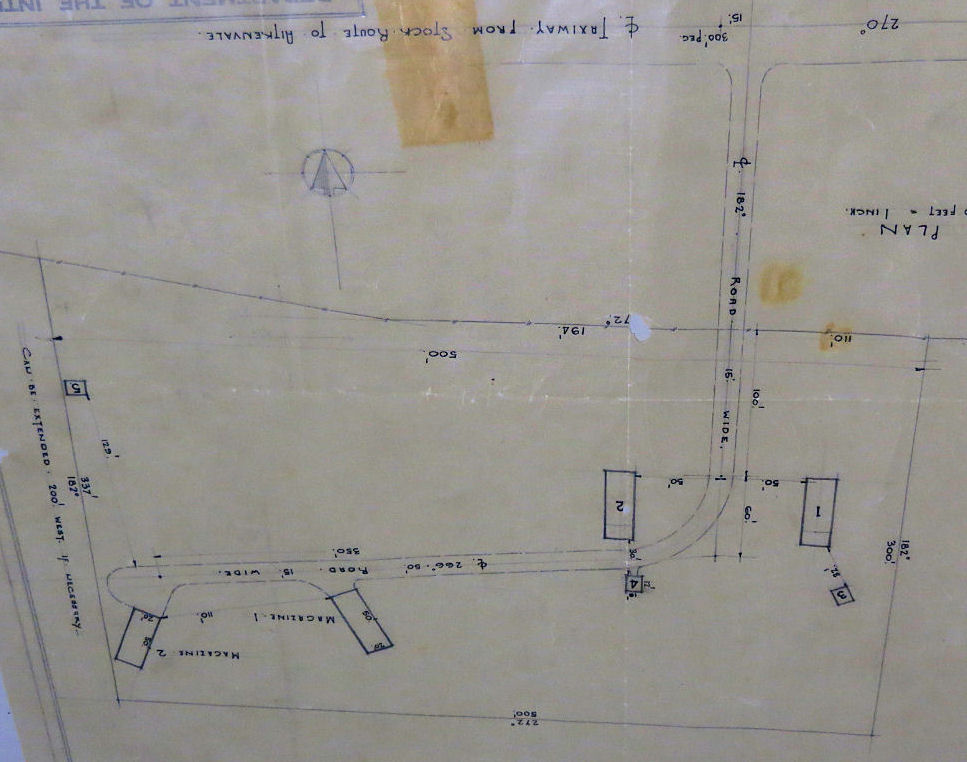
The above Plan has been inverted
to show North at the top of the Plan to line up with the photo below
which has North
at the top. Building No. 1 is the Sleeping Hut
and Building No. 2 is the Recreation
Hall and Mess.
Building No. 3 is the Ablutions Block, Building No. 4 is the Tool Room, and
Building
No. 5 is the Detonator House. The two Magazines are shown at bottom left of the
plan.

1952 Aerial Photo - TCC Mosaic
Remains of the
USN Magazine can be
seen to left of the two igloos. Magazine No 1
appears to be still in-situ and some remains appear to be in the position of
Magazine No 2. The Tool Room (Building No. 4), appears to be still there as well.
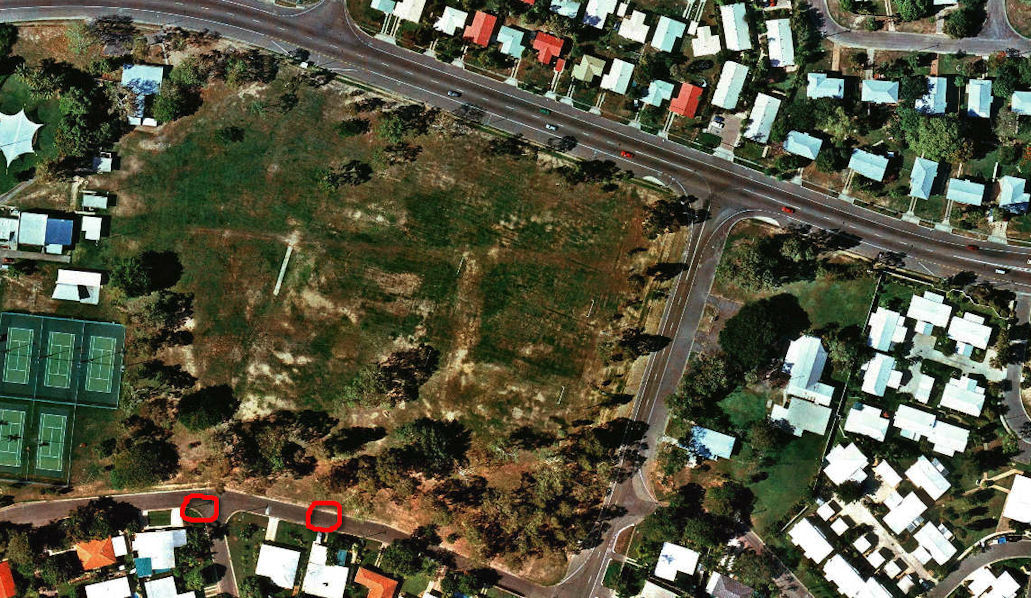
2000 Aerial Photo - TCC Mosaic
This is a view of the same area in
the year 2000. I've marked the approximate locations of Magazine
Nos. 1 and 2 under Finerty Street. The two Igloos were under the houses to the
immediate right of the
park on the other side of Mill Drive. Heatley High School is partly
visible at the far left of the photograph.
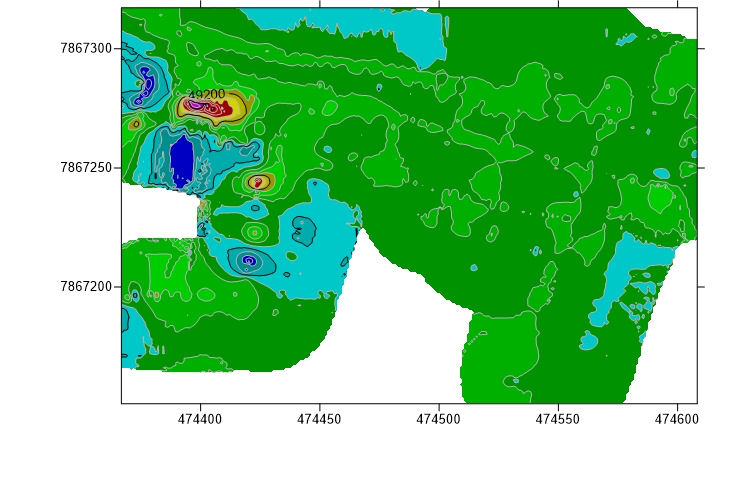
Photo:- Kevin Parkes
Heatley Park Magnetometer Anomaly Contour
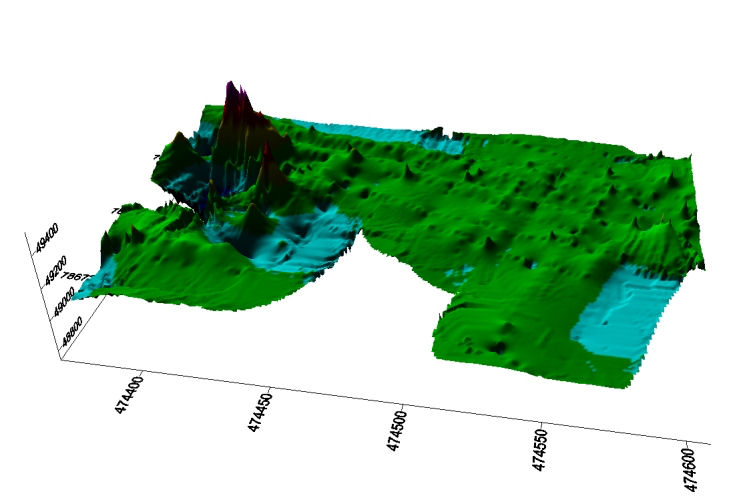
Photo:- Kevin Parkes
Heatley Park Magnetometer Anomaly
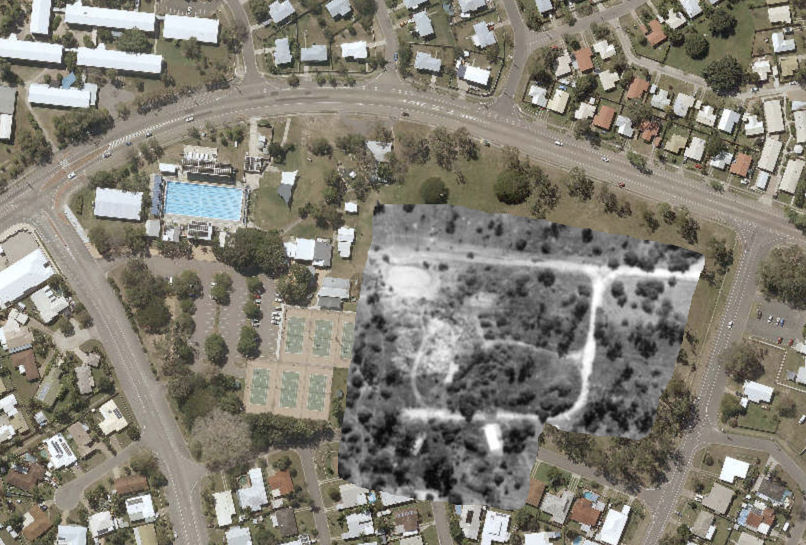
This shows the position of the
burial pit and the former US
Naval Magazine area overlaid on a modern aerial photo

I have now overlaid the hotspots on the magnetometer plots
This site should not be confused with another scrap metal recycling area which was located in the north eastern quadrant of the corner of Charles Street and Anne Street beside the railway line that ran from the Townsville Air Depot to the Hubert Wells Power Station. It can be clearly seen in the 1946 aerial photos of the area and operated for a number of years after the war. Perhaps this was the area referred to in an article in the Townsville Daily Bulletin, on Thursday 31 October 1946 which referred to the following:-
"At Townsville, 1500 tons of wrecked aircraft are being offered for sale by tender. Eighty per cent of the metal in this scrap heap is aluminium."
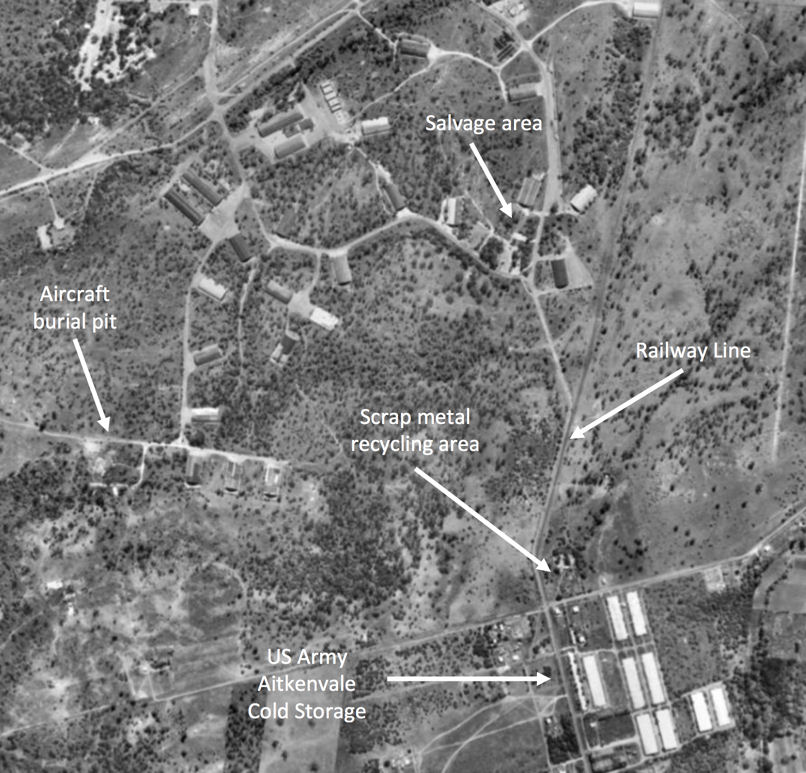
Aerial showing location of the various sites
The Heritage Officer at the Townsville City Council was made aware of the historic find in Heatley Park and he advised that there were no further excavation works planned in the park.
On page 241 of "Wings Around Us", author Rodney G. Cardell describes an incident which took place in Townsville, most likely in January 1945:-
"Those aircraft of questionable value were cut up and torched in large bulldozer-excavated pits. Tragically one of the 12th ADG's personnel perished in one of these fires."
The 16 February 1945 Monthly Report for the 12th Air Depot Group mentions this incident as follows:-
"As a solution to this problem of amassed material, destruction was the answer. Bulldozers were used to scrape out a large pit. Into this pit were piled many items that were declared obsolete or of no further value. When an accumulation was stacked high, it was saturated with lubricants and ignited. In this manner, it was possible to dispose of countless large objects that otherwise would have to be left dejectedly marring an expanse of Australian bush. All went well for a time. Vast amounts of salvage were thus elemented, leaving only those good items that were on an "active stock" basis, and the metal or iron items that would not burn. One of these fires proved fateful, as it ignited prematurely, throwing flames and metal parts many feet in the air. This explosion took place with such suddenness that men who were at work at the fire pit edge were severely burned and one body was found after the fire was extinguished. Nine others were immediately hospitalised."
Keith Goodall told Keith Hopper that he was at the Townsville Air Depot at Mount Louisa on the day of the explosion but not near the aircraft burial pit. He said that the huge blast blew a large piece of 4 x 2 timber high and far enough to penetrate the roof of one of the nearby igloos. The Air Depot was winding down at the time of the explosion, so the piece of timber was not removed and Keith remembered seeing it sticking out of the roof every time he passed the igloo, until the late 1960s.
Peter Johnstone told me the following story that he had heard from Syd Beck:-
After the war or towards the end of the war. There was a pit. It was being filled with something either Aviation gas or plain old gasoline. This particular driver used to reverse up to the pit release the fuel and then move to the front of the truck sit down on the bumper and have a smoke. He did this every time he unloaded another load.
Until one day the wind must have been blowing the other way and the fuel ignited and the resulting explosion was so large no trace was found of the driver or most of his truck. So many people were injured there was not enough hospital space left in Townsville (which make me think it was after the war or towards the very end). They had to transfer patients to Charters Towers and Ingham.
The pit in this story was just off Nathan Street. So maybe there was another explosion after January.
Salvage Area for Depot #2 when it was
operational
which will give you an idea of what aircraft parts
may have been buried in the aircraft burial pit.
Note:- this is not the "aircraft
burial pit" or the "scrap metal
recycling area", but was part of the operational Depot #2
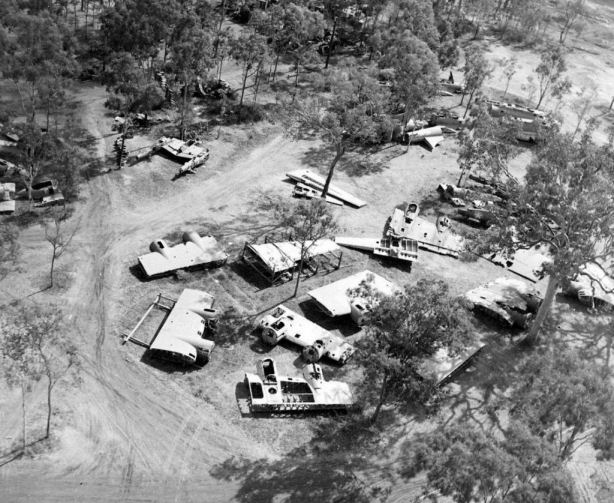
Salvage area for Depot #2
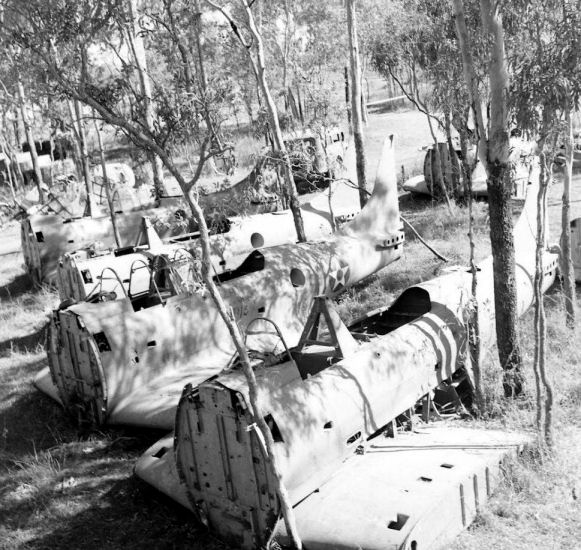
Salvage area for Depot #2
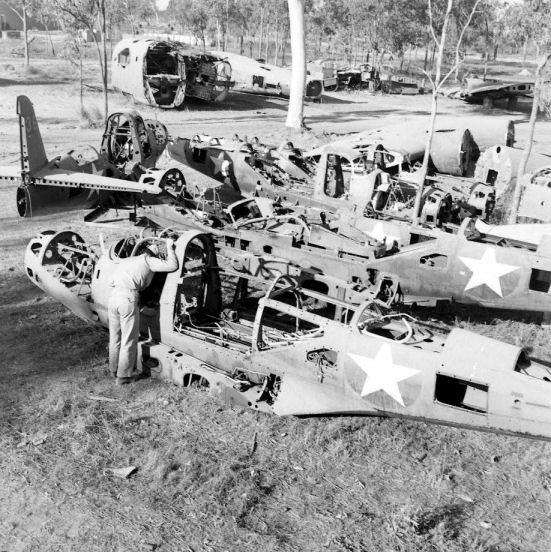
Salvage area for Depot #2
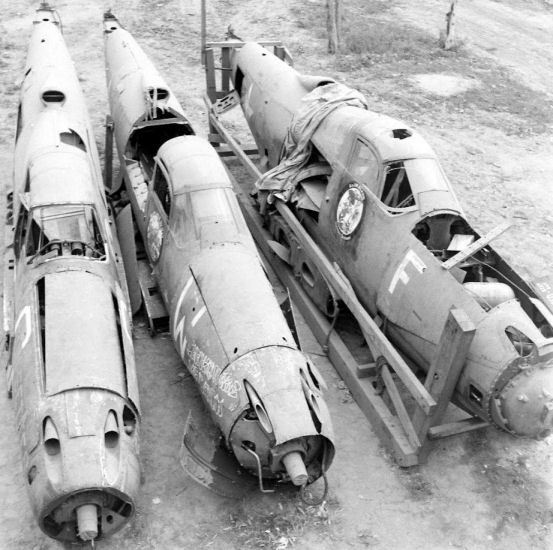
Salvage area for Depot #2

Salvage area for Depot #2
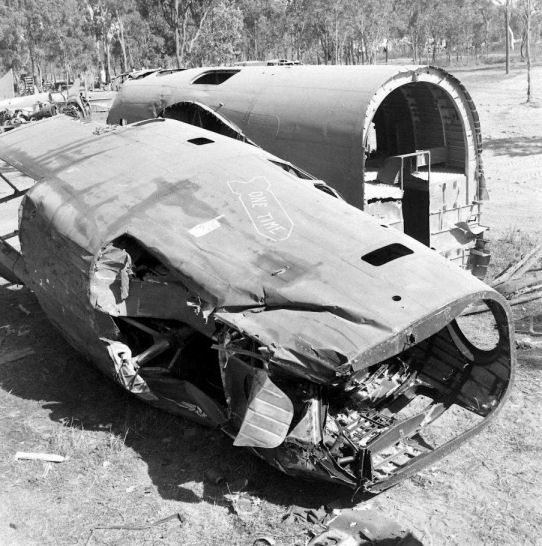
Remains of B-24D Liberator
#41-11869 “One Time” of 90th
Bomb Group which crash landed Darwin on 18 Mar 1943

Salvage area for Depot #2

Salvage area for Depot #2
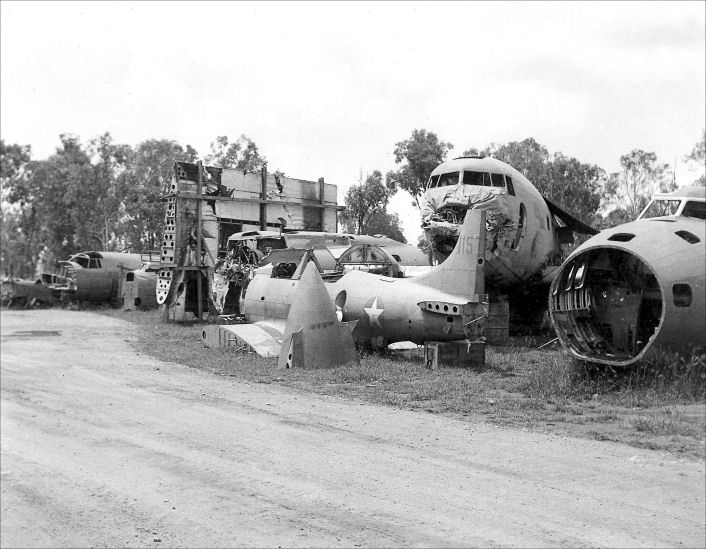
Salvage area for Depot #2
REFERENCES
"Wings Around Us"
by Rodney G. Cardell
"Big Air Fleet to be Scrapped", Townsville Daily Bulletin, Thursday 31 October 1946
ACKNOWLEDGEMENTS
I'd like to thank Keith Hopper, Justin Taylan, Daniel Leahy, Brad McCartin, Edward Rogers, Peter E. Johnstone, Kevin Parkes and Mel Dundas-Taylor for their assistance with this web page.
Can anyone help me with more information?
"Australia @ War" WWII Research Products
|
© Peter Dunn 2015 |
Please
e-mail me |
This page first produced 10 August 2019
This page last updated 15 January 2020